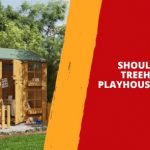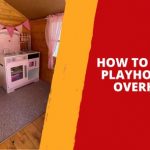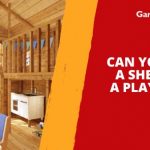Jump to:
A garden playhouse is often the centrepiece of children’s imaginative adventures. These charming structures provide a haven for creativity and endless hours of fun. But this overall enjoyment can be influenced by the surface. Where to situate the outdoor building shouldn’t be taken lightly.
How to choose the right base to put a Wendy house on? This guide will delve into various factors that should be considered, so keep reading!
A Solid Base for Imagination: Factors to Consider
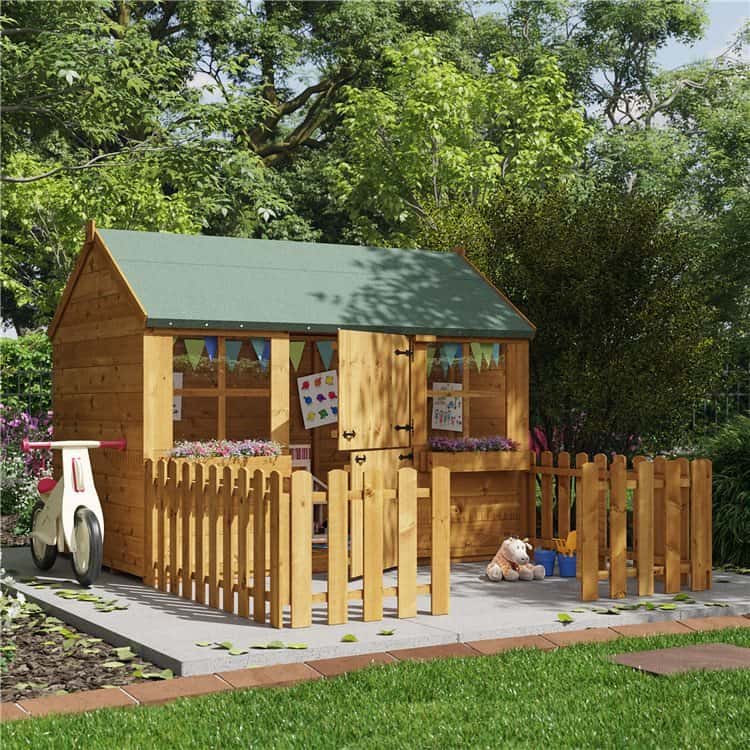
Before deciding on the surface for the garden playhouse, assess the area where it will be placed. Take the time to evaluate the space and prioritise safety to ensure longevity. Here are some key factors to keep in mind:
Ground stability
A stable ground guarantees a safe environment for children to play. The surface should be firm and capable of supporting the weight of the structure. Uneven ground can also pose a risk of accidents and may weaken structural integrity. And to prevent any potential sinking or tilting, choose a stable ground. This guarantees a safe environment for children to play and the unit to settle in.
Drainage
Adequate drainage is essential to prevent water pooling around the playhouse. Otherwise, problems such as rot, mould and damage to the playhouse can occur. These issues can also impact the unit’s durability and safety. So make sure the surface you choose allows for efficient water runoff.
Levelness
Levelness directly impacts the safety of children playing inside the playhouse. It also ensures that the doors and windows function properly. Additionally, a level surface helps distribute the weight of the unit evenly. This helps prevent excessive stress in specific areas.
When it comes to installation, positioning it on a level base simplifies the process. Overall, levelness assures the playhouse stands strong and secure.
Safety features
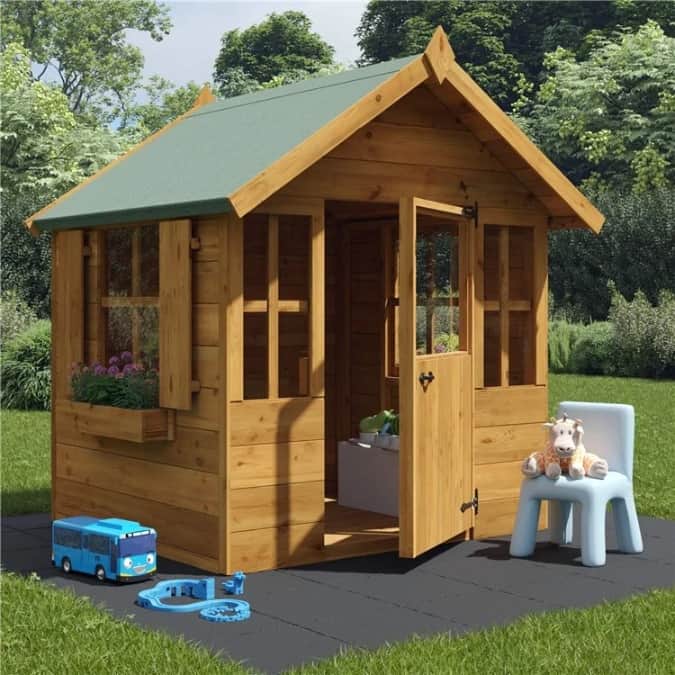
The chosen surface should incorporate safety features to minimise the risk of accidents. This includes opting for materials that provide cushioning and shock absorption. The surface should also be free from hazards that could cause injury, e.g. sharp objects.
Prioritise safety while also considering the long-term durability of the chosen surface.
1. Grass
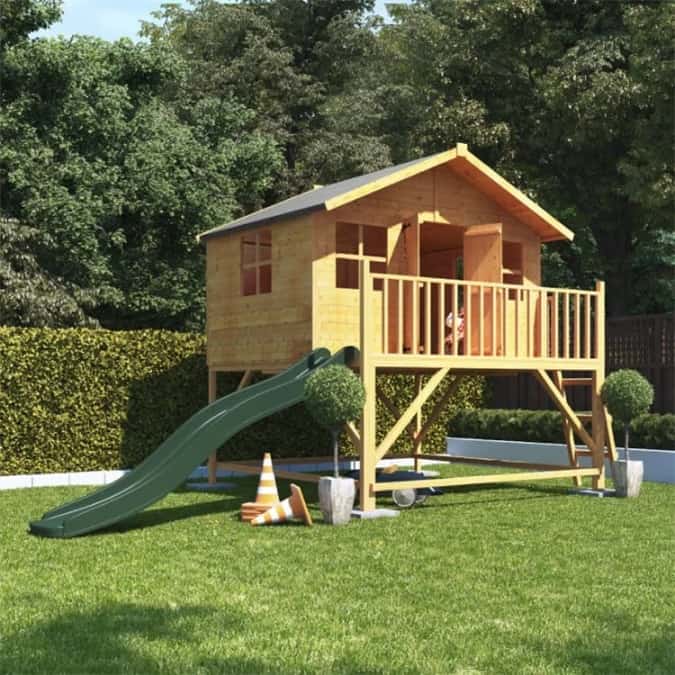
The grass is the most traditional surface for an outdoor playhouse. It’s a natural and visually appealing option that can blend seamlessly into gardens.
Pros: Grass is easy to find and generally inexpensive to maintain. It’s also a soft surface that provides a natural cushion for falls, reducing the risk of injury.
Cons: Grass requires regular mowing, watering, and weeding to keep it looking pristine. It can also become muddy and slippery after rain, which increases the risk of accidents.
2. Wood chips or mulch
Wood chips or mulch provide a softer landing surface than grass. They can be made from a variety of materials, including cedar, cypress, or pine.
Pros: Wood chips or mulch are relatively low-maintenance. They also help with weed control and moisture retention in the soil.
Cons: Wood chips or mulch can attract insects and other pests. As a result, they may require periodic replacement to maintain their effectiveness. They can also be messy and require frequent raking to keep the area neat.
3. Rubber mulch or playground tiles
Rubber mulch or playground tiles are a low-maintenance and durable surface choice. They’re made from recycled rubber and come in a variety of colours and styles.
Pros: Easy to install and require minimal maintenance. They provide excellent shock absorption and slip resistance, to add. This makes them a safer option than natural surfaces.
Cons: The material can be expensive, and some people find the rubber smell unpleasant. They can also be more challenging to clean than other surfaces. Periodic disinfecting may also be required to prevent the growth of bacteria.
4. Paving stones or concrete base
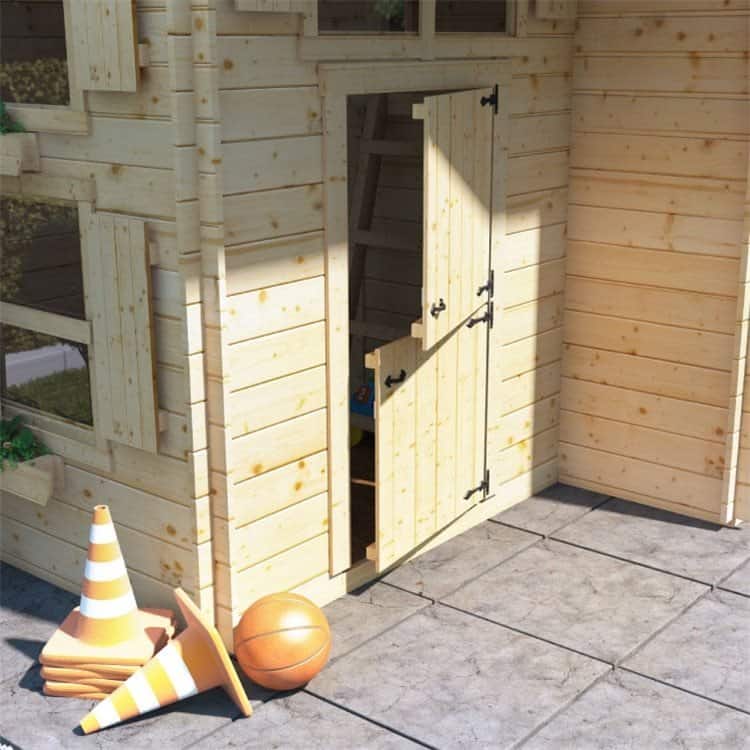
Paving stones or concrete offers a solid and durable surface. Even better, both require minimal maintenance! They also come in various shapes and colours for customisation.
Pros: They provide a smooth and even surface that’s easy to clean and doesn’t attract pests.
Cons: They can be costly to install, and they don’t offer the same level of cushioning as natural or rubber surfaces. They can also become hot to the touch in direct sunlight.
5. Composite decking or artificial turf
If you’re looking for a modern option, go for composite decking or artificial turf. Both choices provide a sleek and low-maintenance surface for a wooden playhouse.
Composite decking is made from a combination of wood fibres and plastic. Artificial turf mimics the look and feel of natural grass, thanks to the synthetic fibre.
Pros: They offer a level and non-slip surface that’s easy to clean and doesn’t require mowing or watering.
Cons: They can be expensive to install, and they don’t provide a strong level of cushioning. Like paving stones or concrete, they can also become uncomfortable during summer.
Consider the factors that are most important to you, such as safety and maintenance. Weigh in the pros and cons of each option before making a decision.
Round-up
A garden playhouse’s surface directly impacts the following:
- safety
- durability
- overall enjoyment of the play space
In this guide, we’ve explored various options, from grass to artificial turf. Each has its own particularities, requiring careful consideration based on your needs. This is important because a well-chosen surface:
- provides a stable foundation
- promotes safety during play
- contributes to the longevity of the playhouse itself
But remember that there’s no one-size-fits-all answer to what is the best surface. Assessing the factors we’ve outlined, however, can help you make an informed decision.

